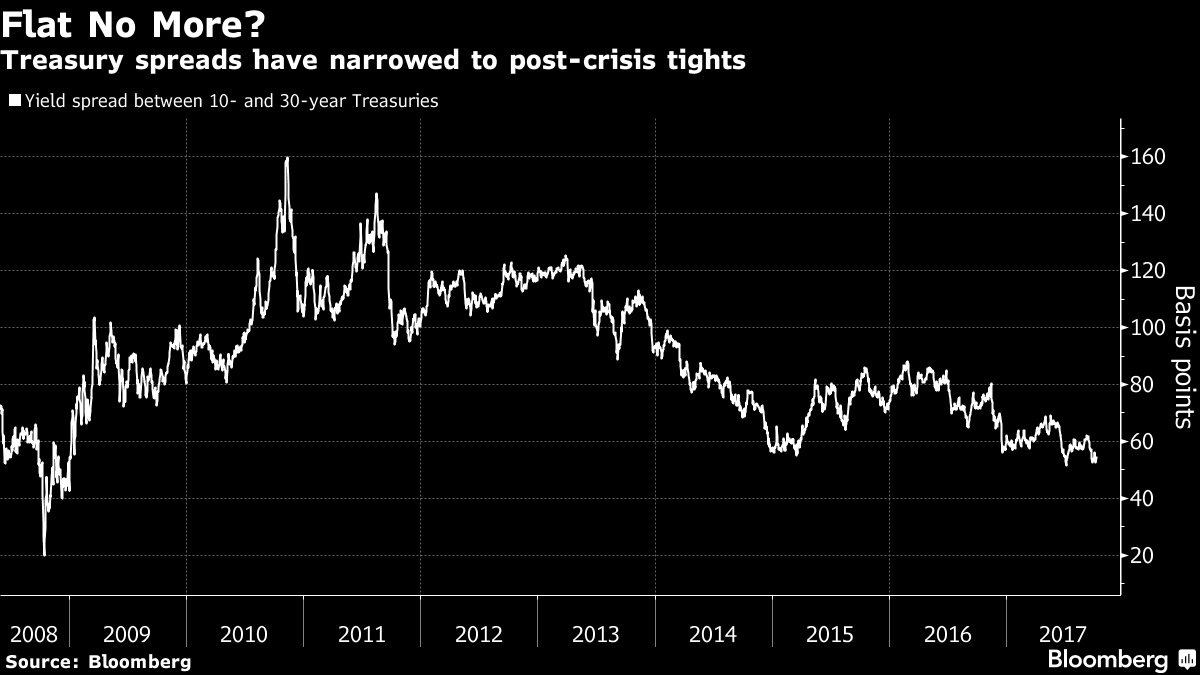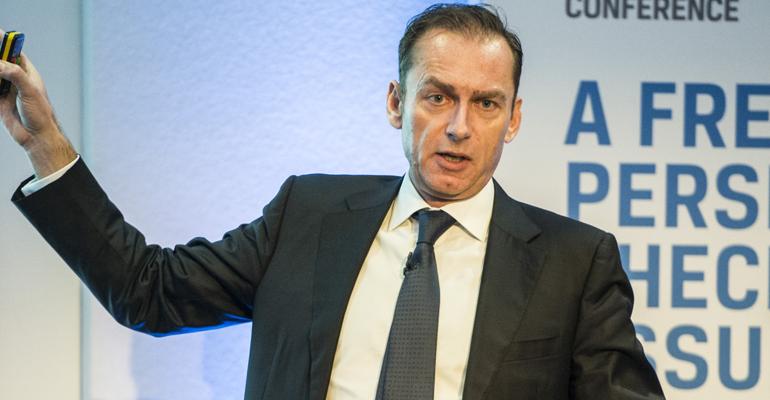By Sid Verma
(Bloomberg) --Famed Treasury bull Steven Major is sticking to his guns: The selloff in 10-year notes has run out of steam as the Federal Reserve’s bid to downsize its $4.5 trillion balance sheet looks unlikely to send yields soaring in the world’s largest bond market.
“Investors want to believe yields will go up as there are signs that the QE policy has had its day,” Major, global head of fixed-income research at HSBC Holdings Plc, wrote in a report Wednesday, referring to quantitative easing. “But we think the stabilizing ballast of central bank balance sheets will contain yields with the normalization of Fed policy likely to be very gradual.”

Treasuries in September suffered their worst losses in 10 months. Meanwhile, traders are holding the largest short position in over a decade as they weigh a a slew of headwinds: A potential supply jump from the Fed’s plan to reinvest fewer maturing proceeds from its bond holdings back into the market, a looser fiscal stance and the potential successor to Fed Chair Janet Yellen.
Not so fast, says Major. He’s holding to his June projection that, by year-end, the benchmark note’s yield will fall to 1.9 percent -- compared with 2.32 percent currently -- and will only return to today’s level in the third quarter of 2018.
Three Points
He reckons the stock and flow effect of the Fed’s withdrawal from the market has been overstated by bears in three ways.
First, there’s limited scope for a material rise in the supply of long-dated obligations in the market while the duration profile of securities held at the Fed naturally decreases with time.
Second, Treasury will also probably issue more bills -- a sector of the curve that has shrunk as a proportion of the outstanding market -- in the early stages of the balance-sheet runoff, which will be comfortably absorbed by investors.
Finally, the projected balance-sheet shrinkage will release only $1.3 trillion of bonds, while the QE program itself absorbed $3.6 trillion.
“The asymmetry of the entry and exit portfolio flows further argue against what appears to be a consensus ‘what goes up must come down’ narrative,” Major concludes.
Bulls should take caution, however. Major’s colleague Lawrence Dyer concedes that, for now, “a significant move to lower yields would require a surprise or crisis.” On Wednesday, the strategist widened the bank’s October trading forecast for the 10-year note to between 2.15 percent and 2.4 percent, compared with the 2.04 percent-to-2.36 percent range notched last month.
The Fed’s move to downgrade its long-run estimate for the federal-funds rate that keeps supply and demand balanced should narrow the trading territory over the long haul, according to Dyer. That makes short-term positioning opportunities more attractive for bulls, as there’s less risk that levels will stage prolonged overshoots than in the past, the strategist adds.
There’s one area where HSBC joins an emerging consensus: the yield curve. The spread between long- and short-term U.S. Treasury bonds should steepen from post-crisis lows, Dyer says, backing trades in 10- to 30-year steepeners.
“Yields have moved up to the top of recent ranges but our forecasts have not changed,” Major concludes.
To contact the reporter on this story: Sid Verma in London at [email protected] To contact the editors responsible for this story: Samuel Potter at [email protected] Andrew Dunn, Eric J. Weiner




